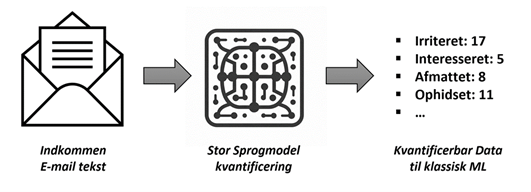Classical machine learning is a method where computers learn to recognize patterns and make predictions from structured data that we prepare for them. This data can be anything from customer behavior to images. For example, ML is used to predict customer loyalty in churn prediction - predicting which customers might leave the company.
ML models are trained by "seeing" many examples and finding patterns they can recognize in new data. However, to work, classic ML requires the data to be organized and structured, often as numbers or categories, and is particularly good for tasks where the outcome is precisely defined.
Generative AI, which uses large-scale language models like Copilot or ChatGPT, works differently. Instead of looking for patterns in numbers, it focuses on understanding and generating human language. Large-scale language models are trained on vast amounts of text from many sources and learn to understand language, tone, and context. This makes them generalists in language understanding that can be adapted to many tasks - from answering questions to writing text.
Where classical ML is like a "specialist" in specific data tasks, generative AI is more like a "language understanding expert" that can work with unstructured data, such as text and conversations.
In short
• Classical ML: Good for patterns in structured data (numbers and categories) and targeted predictions.
• Generative AIGood for language and unstructured data, like human language.
• Combined: Generative AI can translate language into numbers, which classical ML can use to create more nuanced predictions.

By combining classic ML with generative AI, we open up new possibilities. Imagine churn prediction, where a company wants to predict if a customer is leaving. Classical ML can use data about the customer's buying patterns, but it only gives a partial picture. With generative AI, we can also analyze customer emails and assess their tone and emotion - for example, whether a customer is annoyed or satisfied. This linguistic information can be turned into numbers and used as input for the ML model. This way, we can get a more holistic analysis that includes customer actions and emotions.

With the new possibilities of generative AI, it's important to consider how text and speech can be part of your data strategy. While classic machine learning primarily works with structured data such as numbers and categories, generative AI allows us to use linguistic data, namely what others have said and written. This data can provide valuable insights, but to use it, it needs to be stored and organized to be analyzed.
By storing linguistic data, a large language model can help "quantify" the text - turning language into numerical values that a classic ML model can use for predictions. For example, suppose a customer expresses annoyance in an email. In that case, generative AI can assess the level of annoyance and transform this information into a value that can be included in a churn prediction model. This requires we have access to the customer's linguistic data and can use it in the analytics.
In short, to maximize the combination of classic ML and generative AI, companies should consider collecting and storing selected text and speech interactions as part of their data strategy.
About the author

Erik has worked with language technology for many years and, 15 years ago, conducted research that points towards the developments we see today with large-scale language models. His passion for this field means he approaches it from many angles, whether technical, ethical, or philosophical.
With his many years of experience working with machine learning, Erik is excited to convey the information to organizations, companies, and the Danish government, where he is an expert advisor in the field.
By subscribing to our newsletter, you will be notified when we host events, get inspiration from case, and much more.